Best affordable LED TVs UK 2022: cheap TVs with great resolution, from Samsung, Sony and LG
This article contains affiliate links. We may earn a small commission on items purchased through this article, but that does not affect our editorial judgement.
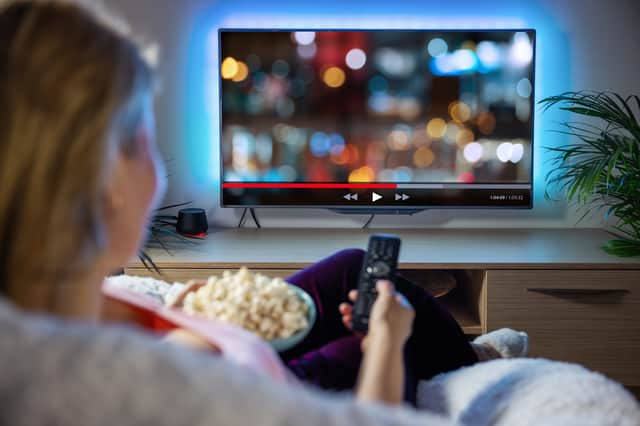

Expensive TVs get all the attention. You hear about “OLED this” and “QLED that”, look at their sky-high prices and feel like giving up. Thankfully, there are plenty of good options if you want to spend a few hundred pounds rather than a grand or more.
All the big names are the largely same. We’d recommend looking at TVs from companies like Samsung, Sony and LG rather than a name no-one has ever heard before that you encounter in a supermarket aisle.
That said, TCL and Hisense should not be ignored. You may not have owned one before, but these are major TV manufacturers out to court new fans with relatively low prices and lots of features.
Best affordable TVs at a glance
- Best for no-nonsense image quality for less money: Samsung UE50TU7020, £339
- Best for the next step-up Samsung: SAMSUNG UE50AU9007KXXU 50” , £429
- Best for techy bargain hunters: HISENSE 50A6GTUK 50” Smart 4K Ultra HD, £298
- Best bang for your buck: TCL QLED 55C715K, £399
- Best for wider viewing angles: LG 50NANO756PA 50 inch 4K UHD HDR Smart NanoCell £ 749
- Best for built-in Chromecasting: Sony KD-43X80J, £599
- Best for small, but stylish: SAMSUNG The Frame QE32LS03TCUXXU 32, £369
Things to consider when buying a TV
We have good news and bad news for those with a relatively tight budget. Let’s start with the good stuff.
4K resolution or less?
4K resolution is a given unless you’re looking to spend less than £300. And the savings are so slight we recommend 4K models unless you are after a tiny TV for the spare bedroom. The TV market is no longer all that friendly to those who think a 43-inch set is “massive”.
Smart services come as standard in all the best budget TVs too. They have baked-in Wi-Fi and support for essentials like Netflix and Amazon Prime Video.
You might miss out on one or two services here and there but we don’t think this should sway too many of you. Smart sticks like the Amazon Fire TV Stick Lite and Google Chromecast cost just £30.
What are the downsides of a cheaper TV?
Ready for the bad stuff? TV manufacturers may tell you their sets support HDR but will you not get a killer HDR experience from a cheap TV.
Good HDR demands high contrast, high brightness and local dimming. No cheap TV has ultra-high brightness or good local dimming, which is where parts of the backlight can be made brighter than others. All LED/LCD TVs use a backlight, rather than having light-up pixels like an OLED TV.
What is the difference between an IPS and a VA TV?
One of the most important picture quality decisions you need to make here is whether to buy a “VA” or “IPS" TV. Don’t worry, this is less techy and imposing than it sounds.
These are two types of screen panel. VA offers good contrast but usually so-so viewing angles. It’s great for movie nights in dimmed rooms, and means the blacks in the picture will really look black.
IPS TVs are much more forgiving if there will be a whole family’s worth of people splayed around the TV on several chairs or sofas.
They have wider viewing angles, but lower contrast. This will make blacks appear slightly grey or blue-grey when you turn the lights out.
Pick IPS for convenience, VA for a more cinematic picture.
All of the picks below are available in multiple sizes, but the features and performance are similar, if not 100% identical, across those sizes. For the best value per inch, go for a 50in or 55in model.
If you find, after purchasing your TV, the sound a little lacking, consider a sound bar for a more cinematic experience.
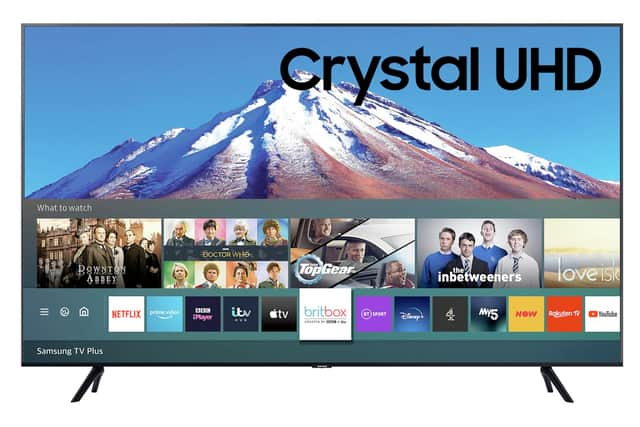

Price per size: £379 (43in), £435 (50in), £479 (55in), £599 (65in)
This Samsung is a top go-to recommendation whenever someone asks for a cheap TV. The 50-inch version is available for a little over £400, the 43-inch for a little under £400. We like this 4K TV for its strong contrast, as a VA panel set, and natural-looking colour.
Lower-quality standard definition footage looks solid thanks to Samsung’s Crystal Processor 4K upscaler and the smart TV platform is fairly comprehensive.
It has apps for Netflix, Prime Video, Disney+ and a bunch of music streaming services including Spotify, Tidal and Apple Music. The UE50TU7020 is also a hit for gamers thanks to its low input lag.
We recommend getting a soundbar as the baked in speakers aren’t very good, but the Samsung UE50TU7020 has eARC. This feature lets you connect compatible soundbars using HDMI to pass through ultra-high-quality audio.
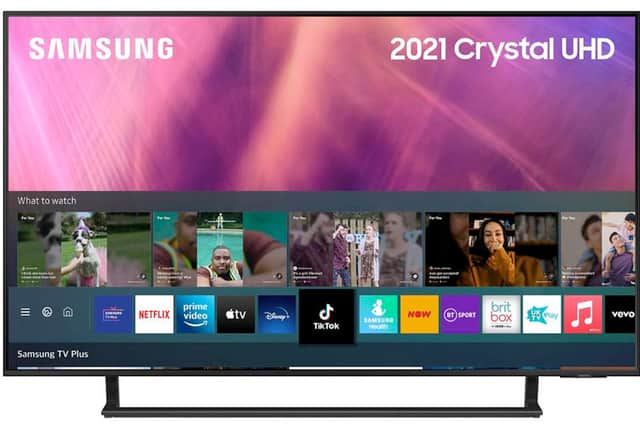

Price per size: £549 (43in), £629 (50in) £749 (55in), £999 (55in),
If you can afford to spend a little more, the Samsung UE50AU9000 is a great buy. It starts at £549 for the 43-inch version.
Why buy this over the Samsung TU7020? You can expect it to be a little brighter, which helps with HDR content. And it has three HDMI inputs rather than two, handy if you own a couple of games consoles and perhaps a 4K Blu-ray player.
It also has an ambient mode, which makes the TV act a bit like a giant photo frame: arguably a waste of electricity. And “object tracking” sound, although we’d still recommend using a soundbar or speakers with the TV.
As with the TU7020 the main reason to buy the UE50AU9000 is its rich image.
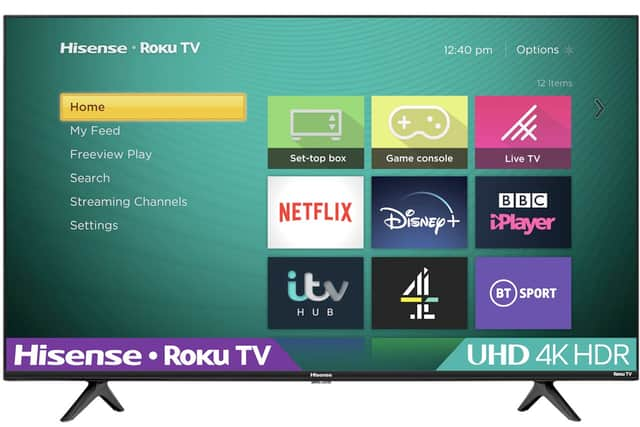

Price per size: £379 (50in), £399 (55in)
Hisense produces some of the most impressive budget and mid-range TVs, and the R50A7200GTUK is a bit of a star at around £380. It is one of the cheapest sets with a “direct” backlight.
This means the LEDs that light up the screen sit right behind the display, rather than firing from the side.
It tends to provide more even lighting across the screen.
However, the real draw here is the Hisense R50A7200GTUK costs around £80 less than the Samsung equivalent. You can always trust Hisense to undercut the big-name competition. It has a relatively generous (at the price) three HDMI sockets, and the picture pops thanks to its high-contrast VA panel. It uses Roku’s smart TV interface, dripping in apps.
Some of the finer points, like colour, upscaling and motion handling, are not best-in-class. But if you want as much TV as you can get for £296, you can’t do much better.
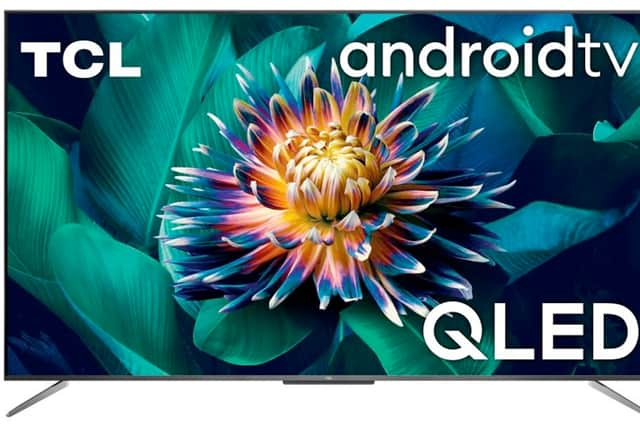

Price per size: £488, (50in), £507 (55in), £664 (65in)
You might compare TCL to Hisense. They are two Chinese companies looking to make it big in western spots like the UK. Its tactic is to offer a lot of tech for as little cash as possible.
The TCL QLED 55C715K is the result. It’s a large ~£500 TV with quantum dot tech, the same seen in Samsung’s QLED TVs.
This provides super-rich and vivid colour.
It’s big on the “bang for your buck” factor. However, don’t expect the finesse that would make this a world-beater.
The Android TV interface is renowned for being a bit slow at times, and while brightness is solid enough for the price, the “pop” of HDR is going to come from the colour rather than searing brightness. Motion is not best-in-class either. Not perfect, but you get a lot for your money.
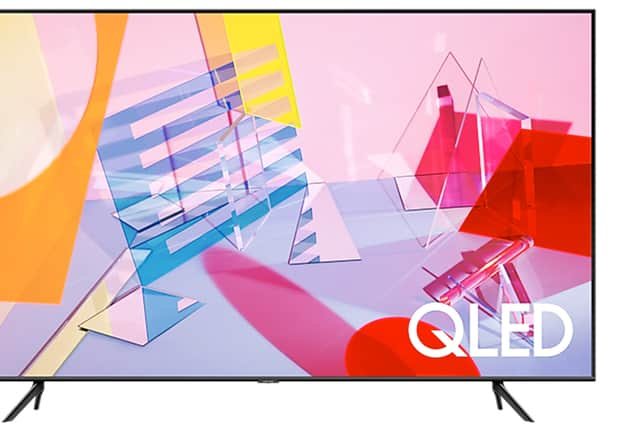

Price per size: £599, (50in)£699 (55in), £999 (65in)
This is a 2020 Samsung TV, and the entry point to QLED tech, which boosts the vibrancy of colour. So is it worth the extra you pay over the step-down Samsung sets?
The Samsung QEQ60T offers the great contrast of a VA panel, for rich blacks, and has higher brightness than either of the cheaper Samsung TVs in this list. This is where Samsungs start to get serious.
But not too serious. The Samsung QEQ60T still doesn’t have the local dimming you need for a killer HDR picture. Have a look at our all-budget best TVs piece for sets with that kind of power.
Still, it’s still a great TV for Netflix TV and movie viewing, and we’re fans of Samsng’s Tizen TV interface.
Right now it’s available for less than the newer Samsung UE50AU9000, making it a pretty smart buy.
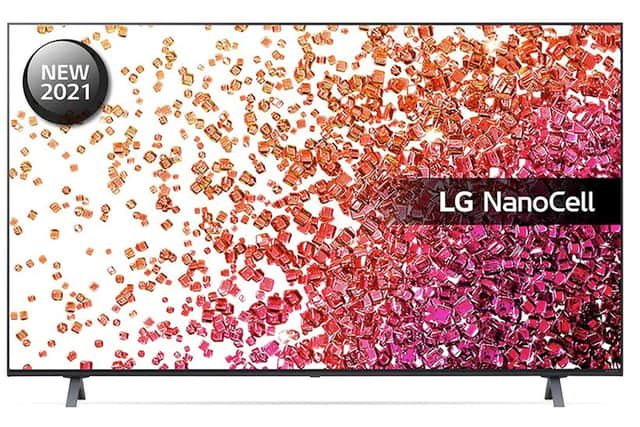

Price per size: £579 (50in), £649 (55in)
The 50NANO756PA is one of LG’s cheaper 2021 Nanocell TVs. This means it has an extra filter layer designed to improve colour, a bit like Samsung’s QLED sets.
Its character is still going to be largely defined by the IPS panel it uses, though. This means contrast is not ultra-high, resulting in less deep-looking blacks in a dimmed room. But it will be more forgiving about off-angle viewing, useful for larger families.
The LG 50 Inch 50NANO756PA also has LG’s WebOS interface. This is a slick and sleek smart TV system. It offers Netflix, Apple TV, Amazon Prime Video, Disney+, Freeview Play and more.
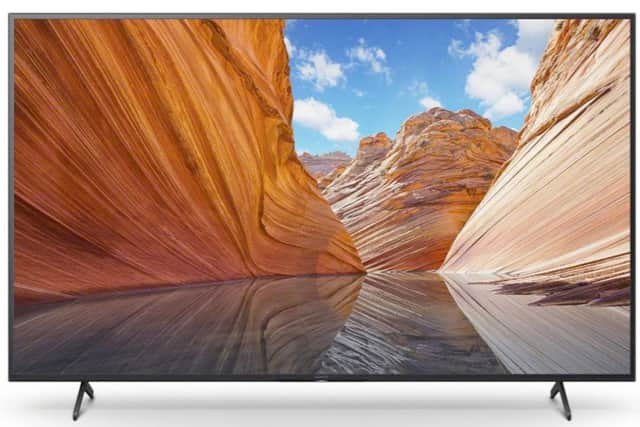

Price per size: £729 (43in)
Sony isn’t quite as competitive as Samsung in the lower-end TV scene, but the Sony KD-43X80J does just about slide into our price bracket. It costs around £700-750 for the 43-inch version.
It has an IPS-style screen, resulting in good viewing angles but limited contrast.
Blacks will appear greyish in a cinema-like dimmed room. And while brightness is better than most of the cheaper TVs here, it won’t show off HDR content like a higher-end set.
So why buy this Sony? Its Google TV interface may appeal. This shrugs off the laggy feel of earlier Android TV sets, offers loads of apps and handy built-in Chromecast.


Price per size: £599 (32in)
Samsung is the only company that makes a genuinely nice small 32in TV. It’s part of its “The Frame” range of lifestyle-heavy sets.
There are some unusual things going on here. It’s a 1080p set, not a 4K one, which is no surprise given how small it is.
However, it does use Samsung’s QLED tech for more powerful colour. This ties in nicely with its photo frame Art Mode feature. It’s fluff, but someone must like it.
This Frame TV is rather nice-looking, with a minimal stand and far slimmer display surrounds than the 32in TVs of old. Not for everyone, but worth a shout-out.